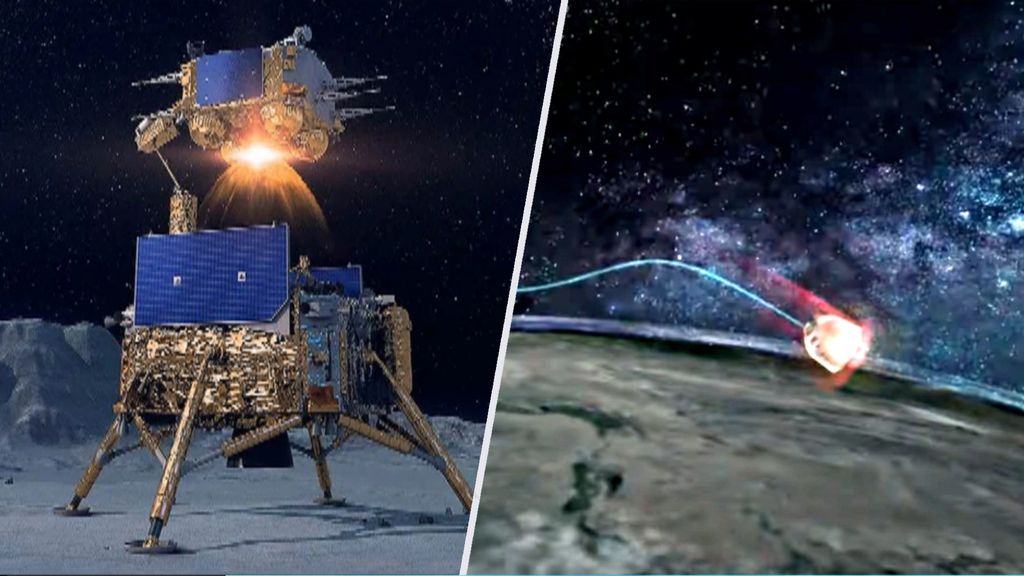Noos News•
-
Ivo Landmann
Online editor
-
Evo Landman
Online editor
According to the plan, a cone-shaped capsule will land tomorrow morning in the desert of Inner Mongolia, an autonomous region in China. The cargo on board is precious: a rock from the far side of the Moon.
The Chang’e 6 mission appears to represent another Chinese space success and brings Beijing closer to the ultimate goal: the first Chinese on the moon. This success puts pressure on US ambitions towards the moon. Can China win the New Moon Race?
Planetary scientist Wim van Westerenen (VU Amsterdam) is happy with every mission to the Moon, including the Chinese success. He says this task is particularly important for science. “So far we only have rocks and dust from the far side of the Moon. We know that the far side looks very different. So we really want to analyze samples from the far side.”
The rock the probe brought to Earth could help answer a big question: How did the Moon form? According to the most common theory, the Moon is the product of a massive collision between Earth and another planet. It is said that the moon was formed from a huge cloud of debris.
Van Westerenen: “Computer models of this large impact suggest that Moon rocks should look somewhat different in composition from Earth’s rocks.”
But rocks returned from US moon missions do not show this. “This is a problem, and it could be solved in one fell swoop if the rock brought back by Chang’e 6 was completely different. This would confirm the theory of this big impact,” the scientist explains.
The second reason the debris from Chang’e 6 is interesting is that the lander landed in a very deep crater. The spacecraft may have picked up material from beneath the moon’s crust. “Underneath that mantle we don’t have any material from inside the moon yet.”
Besides science, China is concerned with prestige and public relations, says journalist Andrew Jones, who covers China’s space program for Spacenews.com. Beijing wants to send humans to the moon by around 2030, preferably earlier than the Americans have planned in their own lunar plans. Jones: “They won’t say it out loud, but it would be a PR coup.”
NASA wants to put astronauts on the moon again by the end of 2026, but there is a high possibility that this ambition will be delayed. SpaceX’s landers and lunar suits, among other things, are not ready yet. India also has ambitious plans, but it is still at the beginning of its manned space programme.
China is not yet ready for a manned landing on the moon. A lander, lunar suits, and a new lunar rocket are currently being developed; “It consists of three rocket stages from the existing Long March 5, but they have not been tested yet,” says Jones. “If problems arise there, China’s lunar program will be delayed as well.”
Positive messages are being exchanged from China about the moon programme. “And you have to believe it, because we don’t see anything. But the fact that they are so confident about it is clear. They don’t usually make claims that are not based on anything.”
Even astronomer and space expert Mark Kleinwalt, who was extensively involved in a previous Chinese mission to the moon, is cautiously investing his money in China. “For many reasons. The most important is that this is a matter of national pride for China. They cannot fail. Losing face is seen as much worse there than it is here. That’s why they all give 100 percent and that partly explains China’s success.” Their space missions so far.”
The second reason is that China’s lunar program is managed at the national level and has a fixed budget. In the United States, every four years we have to wait to see whether Congress will provide money. “The Chinese program is flexible. Something can go wrong in any mission, but in China they always have a backup plan.”





